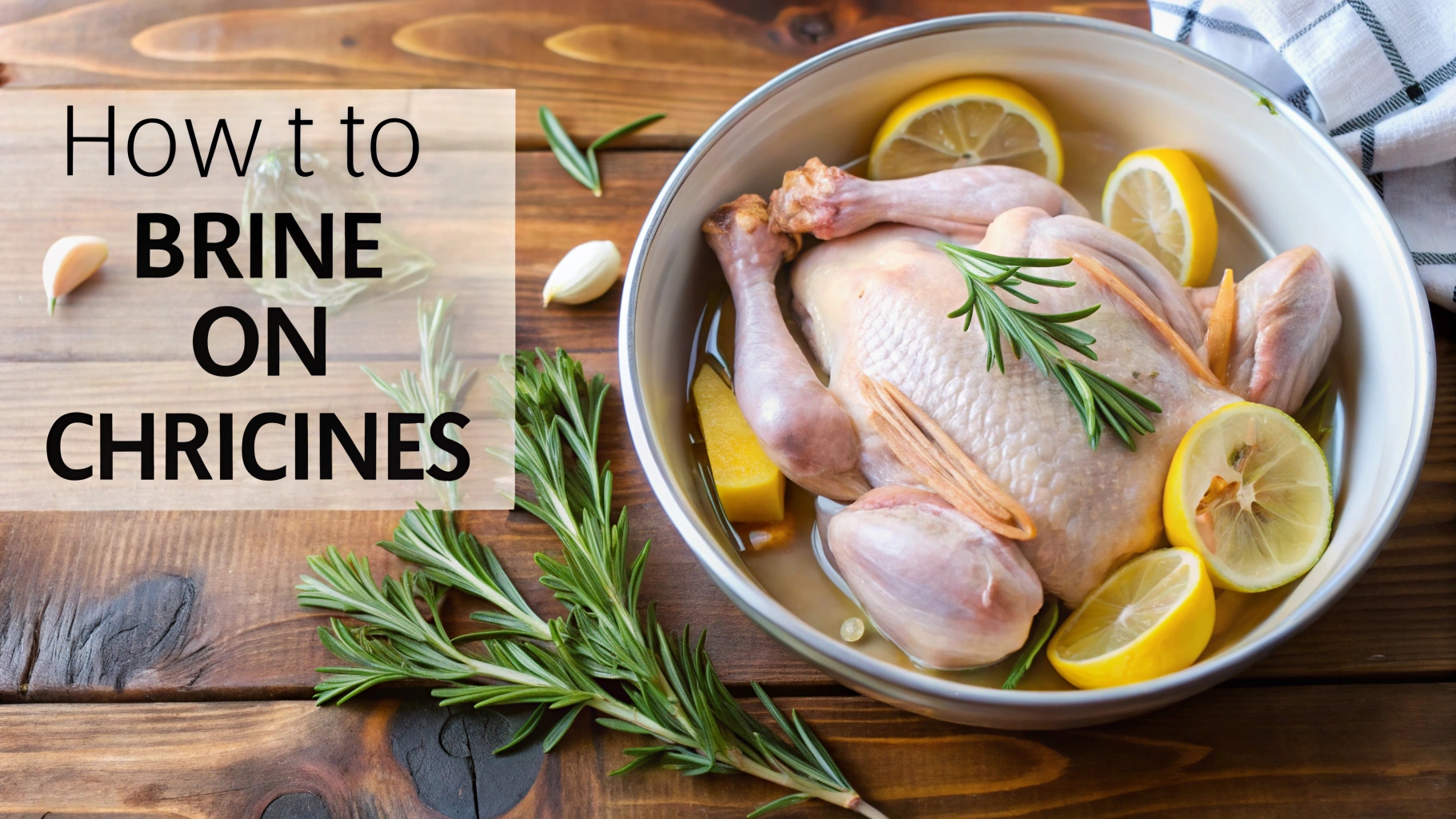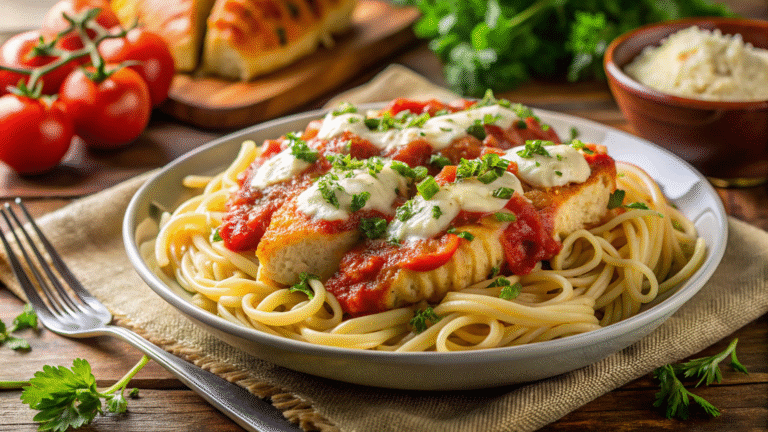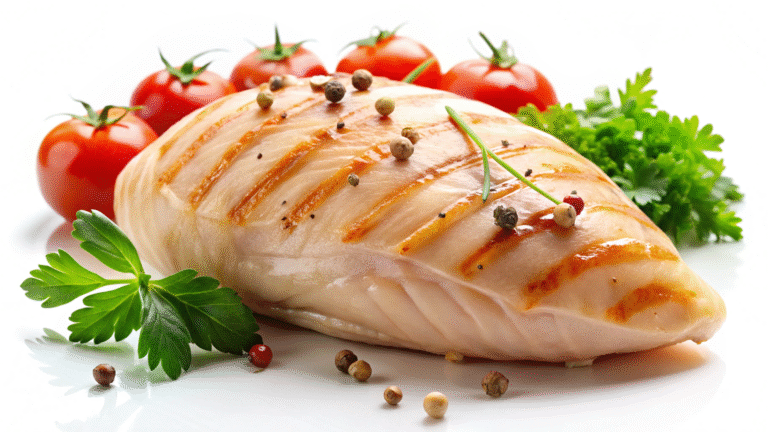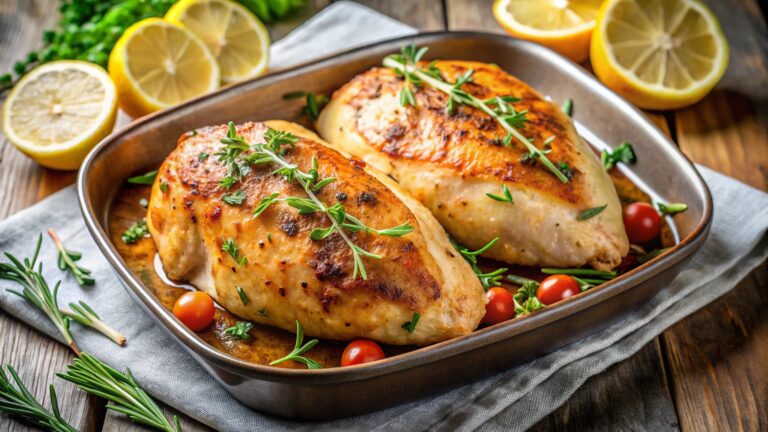How to Brine Chicken: 7 Flavor Boosters for Perfect Herbed Skin

Every great chef knows the secret to juicy chicken isn’t just cooking. It’s about how you prepare it. When I learned to brine chicken, my cooking changed. Now, I can make a chicken that makes everyone’s taste buds happy.
Brining chicken is more than a cooking method. It’s a game-changer in the kitchen. Whether you’re cooking at home or want restaurant-quality food, brining chicken is key. It will make you a better cook.
This guide will teach you all about brining chicken. You’ll learn basic techniques and advanced flavor tips. You’ll see why chefs love it and how simple ingredients can make a big difference.
Key Takeaways
- Brining creates more flavorful and juicy chicken
- Simple ingredients can transform your cooking
- Works for multiple chicken cuts and recipes
- Reduces risk of dry, tough meat
- Easy technique for both beginners and experienced cooks
What is Brining and Why is it Important?
Brining is a technique that makes chicken taste amazing. It involves soaking chicken in a saltwater solution. This method boosts flavor and texture, making chicken juicy and delicious.
Understanding the Brining Process
Brining chicken does more than just add flavor. It involves soaking chicken in a salt solution. This process improves meat quality by retaining moisture and enhancing flavor.
- Increases moisture retention in chicken meat
- Helps prevent dry, tough chicken
- Enhances natural flavor profiles
- Creates more tender and succulent meat
Key Benefits of Brining Chicken
Brining chicken does more than just add salt. It breaks down proteins, allowing water to enter. This keeps chicken moist during cooking, avoiding dry meat.
Professional chefs have long known that brining is the key to perfectly cooked chicken every time.
Brining is great for any chicken dish. It seasons the meat from the inside, ensuring every bite is flavorful. Whether you’re roasting a whole chicken or grilling breasts, brining makes a big difference.
The Science Behind Brining Chicken
Brine chicken techniques use a cool science trick to make ordinary chicken into a tasty treat. Learning about the science of brining chicken makes you a better cook. It’s like magic for your kitchen.
Salt is the magic ingredient here. It works its magic on chicken’s proteins. This lets the chicken soak up more moisture.
How Salt Transforms Protein
Brining chicken does a few important things with salt:
- It breaks down protein muscle fibers
- It helps proteins hold more water
- It makes the meat keep more moisture
“Salt is the key to unlocking incredible tenderness in chicken” – Professional Chef Insights
The Role of Moisture Retention
Brining chicken traps moisture in a special way. The salt solution makes proteins relax, creating spaces for water. This keeps your chicken juicy while it cooks.
Through osmosis, the salt solution gets deep into the chicken’s cells. This makes sure your chicken is always tender and delicious.
Ingredients Needed for Brining Chicken
To make the best brine for chicken, you need to know the key ingredients. These ingredients turn regular chicken into a juicy, tasty dish. Making an easy chicken brine at home is simple with just a few basic items.
The heart of a great brine is a mix of important ingredients. You’ll need three main things for the perfect brine:
- Salt: This is key for keeping chicken moist
- Water: It’s the base of your brine
- Sugar: It balances the salt and helps with browning
Common Brining Solutions
For an easy chicken brine at home, start with a basic ratio. A typical brine has:
| Ingredient | Quantity | Purpose |
|---|---|---|
| Kosher Salt | 1/4 cup | Primary seasoning and moisture retention |
| Water | 4 cups | Liquid base for dissolving salt |
| Brown Sugar | 2 tablespoons | Flavor balance and caramelization |
Optional Flavor Enhancers
To make your brine even better, add these flavor boosters:
- Fresh herbs: Rosemary, thyme, or sage
- Garlic cloves
- Peppercorns
- Citrus zest
- Bay leaves
“The secret to incredible chicken is in the brine – it’s like a flavor passport for your meat!” – Professional Chef
Remember, the secret to a great brine is to experiment. Try different herbs and spices to find your favorite chicken brining recipe.
Step-by-Step Guide to Brining Chicken
Learning how to brine chicken can make your cooking better. It makes the meat juicy and full of flavor. This guide will help you become a pro at brining chicken.
Brining chicken is an art that needs focus and the right techniques. It’s great for both home cooks and chefs. This guide will improve your chicken cooking skills.
Preparing the Perfect Brine Solution
To make a good brine, start with the right ingredients. You’ll need:
- Kosher salt or sea salt
- Filtered water
- Optional flavor enhancers like herbs or spices
“The secret to tender chicken is in the brine” – Professional Chef’s Wisdom
Selecting the Right Container
Choose a container that won’t react with your brine. Good options are:
- Glass dishes
- Food-grade plastic containers
- Stainless steel pots
Timing Your Brine
The brining time varies based on the chicken cut. Smaller pieces need less time, while bigger cuts take longer. Here’s a basic guide:
- Chicken breasts: 30 minutes to 2 hours
- Whole chicken: 8-12 hours
- Chicken thighs: 1-4 hours
By following this guide, you’ll get restaurant-quality chicken at home. Always refrigerate during brining and rinse the chicken before cooking to avoid too much salt.
Brining Methods: Wet vs. Dry
Learning how to brine chicken introduces you to two main methods: wet brining and dry brining. Each method has its own benefits for making juicy chicken. This can take your cooking to the next level.
Choosing the right brining method can make a big difference in your chicken. Knowing the differences between wet and dry brining helps you pick the best one for your cooking.
Exploring Wet Brining Techniques
Wet brining means soaking chicken in a saltwater solution. This method has several advantages for home cooks:
- Dramatically increases moisture retention
- Helps prevent chicken from drying out during cooking
- Allows for easy flavor infusion with herbs and spices
Understanding Dry Brining Advantages
Dry brining involves rubbing salt directly onto the chicken’s surface. It offers unique benefits:
- Creates crispy skin when roasting
- Requires less refrigerator space
- Concentrates natural chicken flavors
| Brining Method | Moisture Retention | Skin Texture | Flavor Intensity |
|---|---|---|---|
| Wet Brining | High | Soft | Mild |
| Dry Brining | Moderate | Crispy | Concentrated |
Your choice between wet and dry brining depends on your cooking goals. Try both methods to find the best way to brine chicken. This will help you achieve delicious results every time.
Brining Different Cuts of Chicken
Brining chicken techniques change based on the cut you’re using. Each cut needs a special way to get the best flavor and juiciness. Knowing these methods will help you make your meat taste great and be tender.

Brining chicken for juicy meat means paying attention to the cut’s size, thickness, and type. Some cuts soak up brine faster and might get too salty if not watched closely.
Whole Chicken Brining Recommendations
Here are some tips for brining a whole chicken:
- Choose a big, safe container that can hold the chicken fully
- Make sure the brine covers the chicken all over
- Keep it in the fridge the whole time
- Brine for 8-12 hours
Brining Boneless Chicken Breasts
Boneless chicken breasts need a gentler brining method. They can get too salty or tough if not brined right.
- Brine for only 2-4 hours
- Use a bit less salt in the brine
- Pat dry well before cooking
- Try a lighter brine with herbs for extra taste
“The secret to perfect chicken is understanding its unique characteristics and treating each cut with precision.” – Professional Chef
Learning how to brine chicken will make your cooking at home much better. You’ll get results that are as good as a restaurant’s with just a little effort.
Flavoring Your Brine
Making the best brine recipes for chicken is an art. It turns ordinary chicken into a culinary masterpiece. The right mix of herbs, spices, and flavor additives can make your chicken stand out.
A delicious brine is more than just salt water. It’s about knowing how ingredients work together. This creates depth and complexity in your chicken’s flavor.
Herbs and Spices to Explore
Your brine can be a flavor powerhouse with the right herbs and spices. Here are some great options:
- Rosemary – adds a robust, woodsy flavor
- Thyme – brings subtle earthy notes
- Black peppercorns – introduces a gentle heat
- Bay leaves – provide a complex aromatic base
- Sage – offers a classic poultry seasoning profile
Citrus and Flavor Boosters
Citrus fruits can make your brine bright and zesty. Try these flavor enhancers:
- Lemon slices – add freshness and acidity
- Orange zest – brings subtle sweetness
- Garlic cloves – create deep, savory undertones
- Fresh ginger – introduces a spicy kick
The best brine recipes for chicken balance salt, herbs, and flavors. Start small and find your perfect mix!
Common Mistakes to Avoid When Brining Chicken
Brining chicken right is all about paying attention to the little things. Even seasoned cooks can slip up and mess up their chicken. Knowing what to watch out for will help you make your chicken both tasty and juicy.

There are a few big mistakes to avoid when brining chicken. These errors can make your dish less than perfect. By steering clear of these common mistakes, you can improve your cooking and make your chicken delicious.
Dangers of Over-Brining
Over-brining can mess up your chicken’s texture and taste. If you leave the chicken in the brine too long, you might end up with:
- Extremely salty meat
- Mushy, unpleasant texture
- Loss of natural chicken flavor
Selecting the Correct Salt
Not all salt is good for brining chicken. The type of salt you use can greatly affect your dish.
| Salt Type | Brining Effectiveness | Recommended Usage |
|---|---|---|
| Kosher Salt | Best for brining | Ideal for most recipes |
| Table Salt | Dense, requires less volume | Use sparingly |
| Sea Salt | Varied crystal sizes | Adjust measurements carefully |
Always measure your salt carefully and stick to the recipe. Trying out different salts can help you find the best one for your brining.
Cooking Brined Chicken: Tips for Success
After brining chicken, you’ll want to ensure your cooking technique maximizes the benefits of this flavor-enhancing process. Brining chicken creates juicy meat with enhanced flavor, setting it apart from standard marinating methods.
Selecting the right cooking method can dramatically improve your brined chicken’s taste and texture. Brining vs marinade for chicken offers unique advantages, particularly in moisture retention and flavor absorption.
Optimal Cooking Techniques
Different cooking methods work best with brined chicken:
- Roasting: Preheat oven to 425°F for crispy skin
- Grilling: Use medium-high heat for even cooking
- Pan-searing: Pat chicken dry before cooking
- Baking: Lower temperature to prevent over-drying
Resting and Serving
Proper resting is crucial for brining chicken for juicy meat. Allow your chicken to rest for 5-10 minutes after cooking to redistribute internal juices.
| Cooking Method | Recommended Temperature | Resting Time |
|---|---|---|
| Roasting | 425°F | 8-10 minutes |
| Grilling | Medium-high | 5-7 minutes |
| Baking | 375°F | 5-8 minutes |
Remember, the key to perfect brined chicken is patience. Allow your meat to rest, which helps retain those delicious, moisture-packed flavors you’ve carefully developed during the brining process.
Conclusion: Enjoying Your Perfectly Brined Chicken
Learning to brine chicken can make your cooking amazing. It’s more than just seasoning. It ensures your meat is juicy and full of flavor every time.
Brining is perfect for any meal, from a quick dinner to a weekend feast. It lets you make chicken dishes that taste like they’re from a restaurant, right in your kitchen.
But there’s more to it than just the technique. Finding the best brine recipes opens up a world of flavors. You can go from simple to sophisticated with just a few ingredients.
Recommended Recipes
Begin with classic brines to see how they work. A rosemary and garlic brine is great for roasted chickens. For grilled chicken, try a lemon-pepper brine. Keep trying new things to find your favorite way to brine.
Final Thoughts on Brining Chicken
Brining takes practice, but it’s worth it. Feel free to play with salt levels, herbs, and brining times. Your taste buds will love you for it. This technique makes sure your chicken is always delicious and moist.







